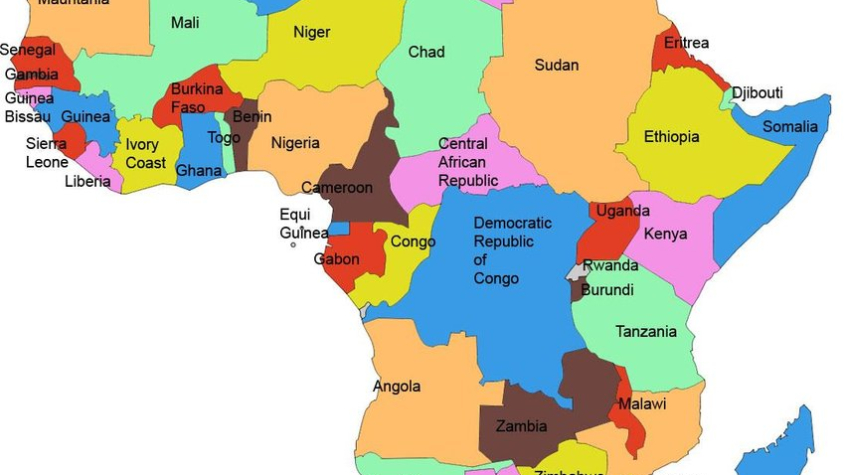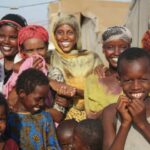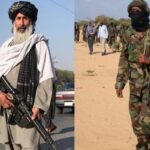My visit to Mogadishu
By Kristine Pearson


Pristine white sand beaches. Families ride small pleasure boats on the turquoise Indian Ocean whisked along by a tropical breeze. Entrepreneurs sell fruit juices, home baked snacks and rent out life jackets to those who can’t swim. In the commercial centre there’s an Apple Reseller, a multi-story shopping mall and gelato and espresso bars where patrons send messages over 5G. More than 20,000 bright red tuk-tuk three-wheelers dash in and out of the traffic along with plenty of shiny new SUVs.
I posted several images onto my Facebook page and asked my friends to guess where in the world I was. Answers included Mombasa, Lake Victoria, Zanzibar, Dubai and Mauritius.
As you read this, the chances are that Mogadishu isn’t springing to mind. I recently returned from the capital city of what, for the past three decades, has been the ‘world’s most failed state’ – Somalia. Although for the past two years, that ‘honour’ has gone to Yemen, with Somalia and South Sudan closely behind according to the Fragile States Index. Pictures of Kalashnikov-wielding youth wearing chains of bullets in a bombed out apocalyptic landscape resembling Dresden in WW2 is a more likely image than young men in sleeveless t-shirts breaking out spontaneously in a traditional dance.
Dancing on the beach video https://youtu.be/lGvQ_8i1cYM
While there, I was on a Zoom call that my good friend, Kyle Zimmer, was also part of. When I told her where I was, horrified, she immediately began reciting the US Travel Advisory which starts out “DO NOT TRAVEL TO SOMALIA” and goes downhill from there.
Mogadishu is still defended like a war zone, but it’s safer now that the African Taliban, or al-Shabaab (the Youth in Arabic), is weakened and has relocated to the countryside. That said, al-Shabaab carried out two deadly suicide bomb attacks a few days before my arrival, killing 20.
Danger in a single story
As writer Chimamanda Ngozi Adichie reminds us “there is danger in a single story.” And Somalia has principally been a single story since the government collapsed and civil war broke out in 1991. There’s been no shortage of accounts of a people beaten down and terrorised by three decades of perpetual chaos, armed conflict, famine, displacement, drought and destruction. Women have lived in constant terror of brutality and sexual abuse not only from al-Shabaab, but also militants and the army.
It was the African country that I’d read the most about that I’d never visited. Over the years I had read plenty of news articles and books written by leading journalists on Somalia. All focused on the conflict and shattered lives. One journalist said there wasn’t a wall in Mogadishu without a thousand bullet holes in it. The exception is BBC journalist, Mary Harper, who challenges us to look beyond the ‘world’s most dangerous place narrative’. I knew Somalia’s colonial history with the Italians and its imposition of alien governing systems and its centuries of connection with Arabia.

Also, between 2007 and 2011, I’d been to Kenya’s sprawling Daadab refugee camps several times where the majority of the then half million, mainly Somalian refugees, had fled. Lifeline Energy, the organisation I head, had distributed solar and wind-up radios to women’s groups and schools and, later, lights to high school girls. Everyone I spoke with had a gut-wrenching story to tell, like Leylo, 19, who had been gang raped twice or mother of nine, Khadiija, who had barely survived a severe beating from her husband because she refused to genitally cut her daughter. Girls told me they were desperate to finish their education instead of being forced into an early marriage. They also believed their only way to repatriation elsewhere was through education. Dadaab is a hardscrabble existence, and a third generation of Somalis is now living there.
Trying to understand Somali culture is further complicated by the fact that although Somalis speak the same language, share the same culture, ethnicity and religion (Sunni Muslim), they are divided into clans, sub-clans and sub-sub-clans. Learning hieroglyphics would be simpler than trying to figure out Somali clan structure.
How I ended up in Mogadishu
Some months ago, I connected on LinkedIn with a Somali-American who lives in the Somali-epicentre of the US, Minneapolis. He works with the NGO that provides support and opportunities for Somalia youth and women in Kenya and Somalia. We discussed the prospect of collaborating on a radio-based education initiative for rural youth. When we were both in Nairobi we met up and he invited me to join him and his colleagues in Somalia later in the week.
Getting there was surprisingly easy. I booked a ticket online to Mogadishu on a Somali-owned airline Freedom Air and got a PCR test. Both were paid for with my M-Pesa banking app as credit cards are not accepted. The flight took off from Nairobi’s main airport and landed on time at Mogadishu’s new Turkish built and operated Aden Adde International Airport. Turkish and Qatar Airways both fly to Mogadishu at present.
These days the airport is busier than either Nairobi’s or Johannesburg’s, several private airlines fly cargo around Somalia, making everything unreasonably expensive.

On arrival I needed a letter of introduction for my visa, which neither my hosts nor I were aware of. I spoke to the airport manager, who said ‘don’t worry, I’ll sort one out for you.” Can you imagine a Somalia arriving in America or the UK with a missing document and being treated with kindness and respect? I can’t. This set the tone for how I was treated during my stay.

Security is everything and everywhere. I had to switch on my cameras, laptop and phones whenever entering a building or my hotel. If there wasn’t a modern screening machine, a woman would pat me down and inspect my bags. When out and about the in the city, an armed guard is highly recommended (if not required) while walking or even travelling in a fast and bulletproof SUV. Armed roadblocks are common and getting in and out of the Baghdad-modelled ‘Green Zone’ involves travelling slowly through heavily guarded security checkpoints.
The first night I stayed at the smart Turkish-built hotel at the airport which had a stylish outdoor café area on the top floor. Somalis came in groups and sat around staring at their smartphones, not saying a word to one another. Sound familiar? This could have been anywhere. There were newly installed Visa and a Mastercard ATMs in the lobby which only issue US dollars.

I then shifted to a Somali-owned hotel full of the diaspora, which I enjoyed. Meals were delicious. The chef had worked at the Indian restaurant at the Intercontinental in Nairobi, where I had eaten often over the years. Several waiters and front desk staff were also Kenyan. They were brought in to raise hospitality standards and with Kenyan tourism in the doldrums, they said they were happy to have jobs. I also came across Syrians and Yemenis who have come to Mogadishu seeking a better life. The Syrians are more likely to be professionals like dentists and technicians, while the Yemenis are cleaners or dishwashers.

Mogadishu’s skyline is fascinating. Italian colonisers made the city the capital of Italian Somaliland and apparently 44% of the 50,000 population in 1940 were Italian immigrants. Italians laid out the city’s gridwork and constructed many government and commercial buildings and houses which have been mostly destroyed. There are now high-rise office towers, butcheries selling camel meat, architecturally pleasing government buildings, auto repair shops and modern hotels which sit next to totally bombed-out buildings.
What I hadn’t expected
I don’t think travel operators will be offering up package tours to Somalia anytime soon, but there are many ongoing and increasing signs of hope and sustained stability. Mogadishu is experiencing an urban boom, largely thanks to massive investments of the active and engaged diaspora, the Islamic Development Bank and foreign investment. Turkey has made $1billion in investments in Somalia over the past decade including humanitarian support, infrastructure development (it manages the port and airport) and military training.

My 35th African country, being there helped bring all the news articles and book chapters that I’d read about Somalia over the years burst into life. Although I knew Somali men write sensitive and thoughtful poetry about their love for their camels and women, I wasn’t expecting the people to be so warm, welcoming and hospitable. I’ve never been asked for so many selfies, including by soldiers. And, it’s the first African country I’ve visited that didn’t have any noticeable presence of the Chinese; however, there’s an embassy and their trawlers are busy fishing offshore.
It now has a functioning central government which is headed by a president and has parliament which serves as the legislative branch. Somalis are incredibly entrepreneurial and risk taking – they’ve had to be out of necessity. Perhaps it’s because historically they were mainly nomadic which created an in-built resilience and an ability to trade and transact to survive. Somalia remains one of the world’s major traders/exporters of livestock (camels, sheep, goats, cattle) to the Arabian Peninsula and other East African countries.
Somalia hasn’t printed money in more than a decade. It uses either USD or mobile phone cash transfers, which was pioneered in 1970 by Dahabshiil. Remittance money is estimated to be more than a billion a year, exceeding humanitarian and development assistance. Dahabshiil now operates in 126 countries and is one of the world’s largest money transfer companies. Someone told me that even people who beg hold signs with their phone numbers scratched on them.
Mogadishu is a few years away from being a seaside tourist port of call like it was prior to the civil war, or even a business destination for non-Somalis. The threat of al-Shabaab remains ever-present. Yet, it is my hope that Somalia will open up, that more people can experience their country untouched by tourists for more than 30 years. In my opinion, the potential for ‘adventure tourism’ is immense, especially since it has the longest coastline in continental Africa.
Whatever I anticipated, my five nights in Mogadishu exceeded all expectations. The entire time in the country I never saw another Caucasian, let alone white woman – while every woman wore an a head-covering abaya.
There were some social media posts which people had posted of me accusing me of being a spy. Although I never felt afraid, I was very conscious of where I was at all times. It did seem a little eery. Was I ever in any real danger? I don’t know. Would I return? In a heartbeat.

Kristine Pearson is an award winning Social Entrepreneur CEO at Lifeline Energy, providing education and information through solar and windup radios & MP3s across Africa. Kristine visited Somalia last month.




